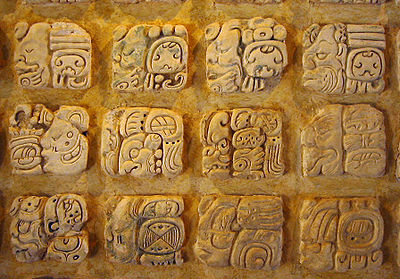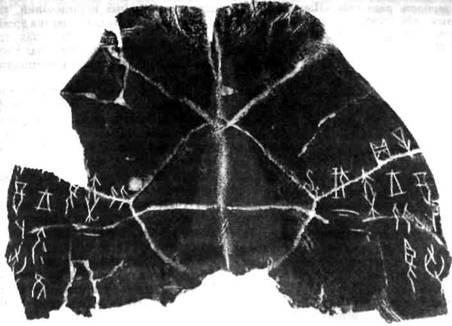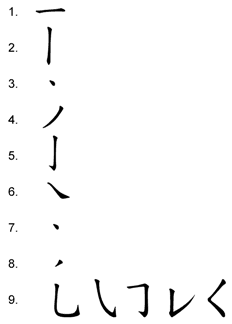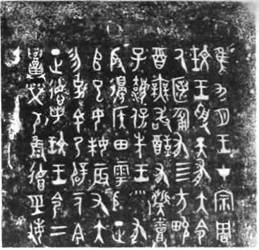History and meaning of Chinese characters. Chinese characters: history and reforms
Story Chinese characters It is still not known exactly when the Chinese characters originated. There is evidence that this happened during the Yin Dynasty (1401-1122 BC), but there is also a legend that Chinese characters were invented by a historiographer of the heavenly Emperor Huangdi named Cang Jie four thousand years ago. Hieroglyphic inscription on the tortoise shell. Photo: Wikipedia evil spirits sobbed all night long, ”the legend says so. The famous scholar and calligrapher of the Tang Dynasty (618-907 AD) Yu Shinan said this about Cang Jie's invention: “He created six types of hieroglyphic features, taking as a model the outlines of mountains and streams, snakes, birds and beasts. The famous Tang writer and artist Zang Yanyuan explained how this fact should be understood: “The sky could no longer keep its secrets from people. People, having learned writing, could already recognize the secrets of heaven. This is similar to a happy act of providence, in which grains of millet themselves fall from Heaven. The legend also says that thanks to the Chinese characters, people got the opportunity to learn the principles and basic laws of the world order. The evil spirits could no longer deceive and mislead people so easily, so they wept. Chinese characters are a true treasure of culture Ancient China. The Chinese speak of "the unity of Heaven and man", which is also reflected in the hieroglyphs. The most ancient hieroglyphs were written on tortoise shells and bull bones. They are called "jiaguwen", which literally means "text on the shell and bones." Then, after the advent of bronze melting technology, Chinese characters began to be written on bronze vessels. They were called "jinwen", which means "text on bronze". 12 characters of the ancient script "Jiaguwen", denoting animals Chinese zodiac. Under each sign its analogue is written in a modern (simplified) style. Hieroglyphs denote (from left to right from top to bottom): rat, bull, tiger, hare, dragon, snake, lo. In the course of the development of hieroglyphic writing, they began to appear various styles calligraphy, such as: zhuan, lishu, xing, cao, kai, etc. Subsequently, calligraphy turned into a kind of art with its own strict rules. For example, each hieroglyph must strictly fit into a square of a given size, the lines of the hieroglyph must be strictly written from top to bottom and from left to right, horizontal lines are written first, and then vertical ones, etc. Below in the picture you can trace the order of writing the features on the example of the Chinese character "wisdom" (huì - hui): In China, it is still believed that calligraphy reflects the qualities and character of a person. In ancient times, applicants for work did not provide a resume, as they do now, but their calligraphy, according to which the employer judged whether to hire this person or not. [back to table of contents] Main Graphic Elements of Chinese Characters In fact, hieroglyphic writing, unlike alphabetical writing, has little to do with the language itself. Its signs should be understood associatively, figuratively. And if the study colloquial speech they start with phonetics, then mastering written literacy - with the simplest components of the Chinese character. Each hieroglyph consists of a certain number of graphic elements (there are more than 200 in total). As a rule, these elements by themselves do not carry any semantic load. Combinations of graphic elements written in a certain sequence are called graphemes. A grapheme can be used as an independent simple Chinese character, or as part of a complex one. The simplest graphemes of the Chinese character. Image: Leonid 2/ en.wikipedia.org The order of writing graphemes in Chinese characters. Photo: H.ua The basic graphic elements of the Chinese character are: a horizontal line a vertical line a point folded to the left a hook a folded to the right an ascending line broken line Derivatives are formed from these simplest elements, for example, a thrice-broken horizontal line. It is also important to know the rules for writing Chinese character elements. For example, the writing tool should move from left to right if we are writing a horizontal stroke, and from top to bottom if we are writing a vertical or oblique stroke. First of all, we write the vertical, then the horizontal. First, a folding line to the left is written, after that - a folding line to the right. First - the sides of the hieroglyph, then - the middle. The last dot is to the right. [back to table of contents] The number of Chinese characters The number of characters, like the characters themselves, has been constantly changing over the course of history. The greatest number of them was collected in the collection "Ji Yun", compiled during the Sun Dynasty. This collection contains 53,525 Chinese characters. Today it is impossible to determine exactly how many ideographic signs the Chinese script has. The average Chinese uses several thousand characters in his speech. A person who understands the meanings of 1.5-3.5 thousand hieroglyphs is considered literate. In an attempt to calculate the exact number of Chinese characters, the opinions of linguists differed. Some call the figure 40 thousand, others - 70 thousand. Most of the hieroglyphs are found only in the texts of classical folk literature. [back to table of contents] Cultural Influence of Chinese Writing A ligature is a wish combined into a single Chinese character. Image: G.S.K.Lee/ en.wikipedia.org You need to know that Chinese culture is the only example ancient culture, which has retained its writing system to this day. We have reached the monuments of Chinese writing, created even before our era - "Shu jing" ("Book of History") and "Shijing" ("Book of Songs"). Chinese writing penetrated Vietnam and Japan as early as the 1st-3rd centuries. n. e. As a result, these languages began to use Chinese characters (adapted and modified) in their writing systems. Japan still uses characters from Chinese origin in its writing system. Chinese writing is primarily based on visual perception. Therefore, there are so-called pictorial hieroglyphs (drawings of plants, flowers, birds, etc., consisting of many hieroglyphic characters) and ligatures (wishes, which are one hieroglyph). Chinese character "Happiness" and greeting cards. Illustration: Donbass.ua It can be said that Chinese characters in some way determined the perception of the surrounding world by this people. Many customs and also some patterns folk art were created under the influence of the characteristics of the Chinese language. For example, there is a tradition to hang an inverted hieroglyph "Happiness" at the entrance to the house. A passer-by will think: “The hieroglyph“ Happiness ”turned over,” which is also consonant with the phrase: “Happiness has come.” [back to content] Pronunciation in Chinese Despite a large number of Chinese characters, words, if you can call them that, are very few in Chinese. The pinyin table (pinyin - transcription) contains only 394 syllables - this is the whole lexicon Chinese. Four basic tones and numerous combinations help to convey the rich content of the written language orally. That is, the same syllable, pronounced in different tones and used in different combinations with other syllables, has absolutely different meanings. In order to recognize all this during communication, a person must have an ear for music to a certain extent. However, if, for example, someone recites an unknown verse in Chinese, no one will understand its entire content by ear until they read its written version. This is because in the poems, non-standard combinations of Chinese characters are used to achieve rhyme, the meanings of which are almost impossible to understand by ear. Some Chinese characters have multiple meanings and pronunciations. On this occasion, there is one interesting story: One day a farmer who made a living by selling bean sprouts asked educated person write him “duilian” (paired inscriptions with wishes, traditionally hung on both sides and on top of the doorway). That person, without thinking twice, wrote him such a “duilian”: “Duilian” of 18 identical characters. The seller looked at the inscription, consisting of eighteen identical characters, for a long time, and then asked: “What kind of wish did you write to me?” The learned man explained to him that these inscriptions read like this: left - cháng zhǎng cháng zhǎng cháng cháng zhǎng (chang chang chang chang chang chang zhang); right - zhǎng cháng zhǎng cháng zhǎng zhǎng cháng; upper - cháng zhǎng zhǎng cháng. Having read the inscription in this way, the seller understood everything and thanked him from the bottom of his heart for his good wishes. The bottom line is that this Chinese character has two pronunciations (chan and zhang) and different meanings: “long”, “grow”, “increase” and “often” or “constantly”. Thus, the inscription can be translated as (this is a wish for the bean sprouts of a peasant): the left one - constantly grow, grow long, grow constantly and long; right - grow constantly, grow long, increase and grow long; upper - often grow, grow long. In the process of studying hieroglyphic writing, a person develops figurative perception and visual memory. Learning to write Chinese characters develops artistic ability. The study of tones develops ear for music. That is, this writing itself contributes harmonious development man, not only enriching his knowledge, but also developing in him the ability to art, which was very much appreciated in ancient China. [back to table of contents] Traditional and simplified script Unfortunately, after the Communist Party seized power, China was almost completely destroyed traditional culture, and a writing reform began, as a result of which the writing of many Chinese characters was greatly simplified and they began to be called "simplified" characters. The meaning of "simplified" hieroglyphs has also changed from their traditional counterparts. This is clearly seen in the example of the hieroglyph "country". Traditional Chinese characters are written from top to bottom from right to left. Signage inscriptions could also be written horizontally from right to left. At present, in Mainland China, they have long switched to simplified hieroglyphs and the "Western" form of writing - horizontally from left to right. However, in the autonomous regions of China, such as Taiwan, Hong Kong and Macau (Maomen), which are not under the direct rule of the Communist Party, ancient style writing and using traditional Chinese characters, which are also called "characters in full style." To read a newspaper in Chinese, you need to know about 3,000 characters.
Chinese writing to this day has not revealed to us the secrets of its origin. . Orientalists consider two points of view on the origin of writing in China: mythological and scientific.
Hieroglyphs are the wisdom of centuries ago. The basic unit in Chinese characters is the grapheme. All graphemes have ancient origin and are rooted in ancient drawings. The prototypes of hieroglyphs are drawings on ancient Chinese ceramics and tablets.
Hieroglyphs are signs that consist of a combination of several graphemes. The Chinese character has both semantic and philosophical meaning.
There are several dialects in the Chinese language. All Chinese dialects differ significantly from one another. Sometimes the Chinese themselves from different provinces cannot understand each other's speech.
And only Chinese writing unites all dialects.
Repeatedly put forward proposals for the reform of hieroglyphic writing in China failed.
We will tell you a little about the meaning of Chinese characters and dive into the history of its appearance.Chinese hieroglyphic writing, as a great cultural heritage of the Celestial Empire, has always been associated in the minds of the Chinese with the merits of a certain historical person. The first mention of traditional Chinese hieroglyphics can be found in the mythical tales of Fu Xi, one of the founders of Chinese culture and the creator of trigrams, and Shen-nung, the founder of agriculture and medicine.
The legend of the Great Fu Xi (r. 2852 - 2737 BC), the legendary emperor of Ancient China, says:
Fu Xi is one of the mythical Three Lords, the first to reveal the content of the eight trigrams (ba-gua). One fine day, walking along the banks of the Yellow River (Yellow River), Fu Xi saw the Great Dragon, on the scales of which mysterious signs were visible. Later, he reflected these symbols in the eight trigrams known to us. All of them correspond to certain concepts (sky, earth, water, thunder, wind, fire, grief, water). Trigrams, in turn, formed 64 hexagrams, which became the foundation for the creation of the Book of Changes (I-Ching (易經)).
And here is the great Fu Xi himself in the view of the Chinese:
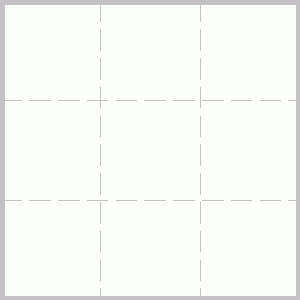
Xu Shen, a well-known philologist and researcher, puts it this way:
When Fu Xi became the ruler of the universe, he was the first to create eight trigrams, and Shen Nong used knots on cords for the needs of government and transmission of orders.
Similar opinions can be found in the I Ching, in the writings of Lao Tzu and the works of Chuang Tzu, which are the most famous historical figures not only in the East, but all over the world.
To record events, people tied knots. To designate important event a large node was used, so a small node represented a minor event. Thus, it can be assumed that Fu Xi and Shen-Nong are the first creators of proto-hieroglyphs, which were symbols of real objects.
If we adhere to the myth of the origin of Chinese writing, then:
The official historiographer of the famous Yellow Emperor (Huang Di) Cang Jie is the creator of today's Chinese hieroglyphic writing. As the legend goes, Cang Jie once saw a deity, on whose face there were peculiar signs resembling letters. This prompted Cang Jie to create hieroglyphs.
But there is another version, another legend:
While hunting, Cang Jie saw a tortoise with blue streaks intricately carved on its shell. Having studied the structure of the image, the historiographer came to the conclusion that the figures on the shell could have meaning and meaning, therefore, with the help of signs, people could communicate with each other and record events.
Cang Jie thought about this for a long time, he looked for opportunities to convey and describe events. It dawned on him that in order to designate some object and phenomenon, it is not necessary to draw the object itself, a conventional designation is enough. Based on observations of the behavior of birds, animals, insects, fish, the location of stars and constellations, the shape of plants and objects, Cang Jie created written characters that became the first Chinese characters - zi (字).
We will not talk about scientific versions of the origin, let those who tune in to a serious conversation excuse me.
But to admire the Chinese characters and find out their meaning - we will not deny ourselves this, right?
So, the first of the hieroglyphs in our gallery will be - love!!!
The hieroglyph Love is often used in Feng Shui symbolism and is familiar to many of you.
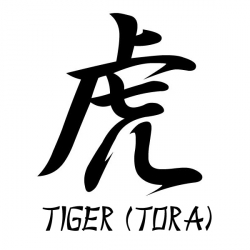
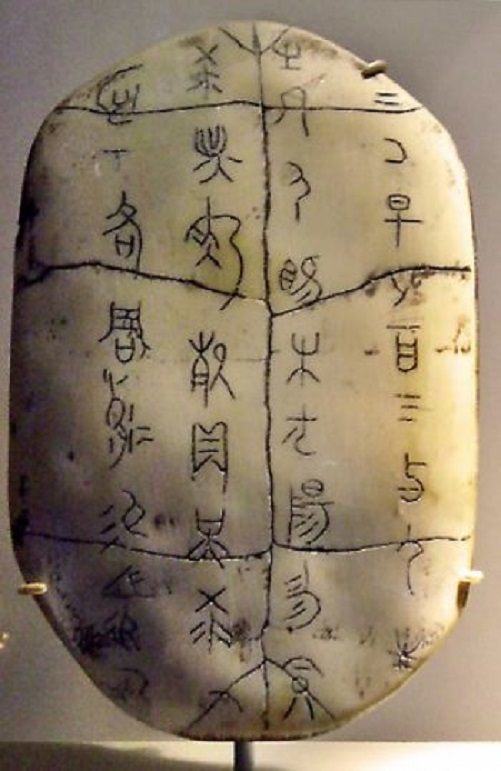
And so the word soul or spirit is written.
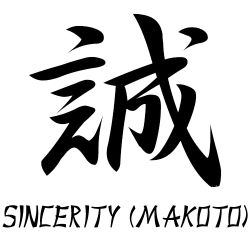
Sincerity. The Chinese really appreciate this quality in people, although they themselves are by no means always sincere with Western people. But here's what you can't refuse them - it's amazing diligence.
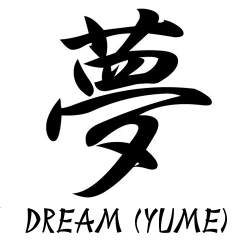
The hieroglyph dream can also often be found on calendars and amulets to attract happiness and good luck.
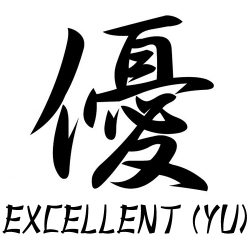
Superiority.
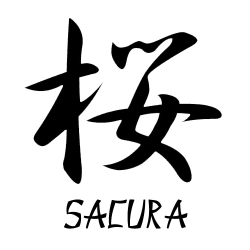
Sakura, an iconic tree in the mysterious and mysterious East.
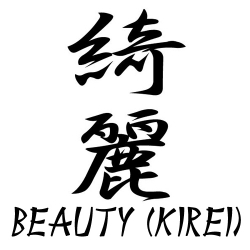
The hieroglyph beauty is very beautiful itself, isn't it?
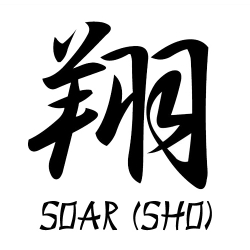
This is how the word flight is written in Chinese.
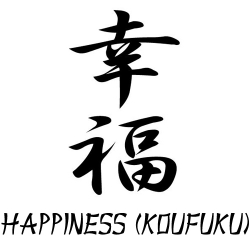
Hieroglyph happiness. Perhaps. the most common to us on talismans, rings, pendants. bracelets, calendar cards and other attributes of "feng shui art".
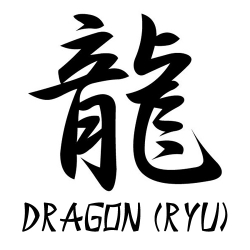
- this is the most ancient view writing on our planet, which not only survived until today, but also occupies one of the leading places among the most common languages in the world. The emergence and evolution of Chinese writing became the impetus for the development of the civilization of the ancient Chinese, and also had an active influence on the formation cultural property and even the whole world. The unique complex of graphic signs and drawings was created more than 6000 years ago.
When reading any Chinese text or book, the question arises of what the hieroglyphs mean, how to translate them. Not even a single Chinese knows how many exactly there are hieroglyphs in the Chinese language.
How many characters are there in Chinese
The total number of Chinese characters is about 50 thousand, but 4-7 thousand characters are practically used. The outline of a hieroglyph is made up of standard features (from one to 28), repeated in various combinations.
Complex hieroglyphs are a combination of simple characters, of which there are about 300. Most of the rare hieroglyphs denote ancient narrow professional terms, various nationalities, tool details, etc.
Facts about Chinese writing in hieroglyphs
Chinese characters- an official letter of the People's Republic of China (PRC), the Republic of China (Taiwan Island), Hong Kong (now Hong Kong - a special autonomous region of the PRC), one of the official scripts of Singapore (Chinese is one of the official languages of the UN). Chinese writing is also common in Indonesia, Cambodia, Laos, Vietnam, Burma, Malaysia and Thailand, where the Chinese are a compact minority. To a limited extent and partly in a modified form, the Chinese script is used in Japan and South Korea. Until 1910, Chinese characters were official in Vietnam.
Traditionally, Chinese characters were written from right to left in vertical columns (like Mongolian writing) . The first publication with horizontal lines from left to right is R. Morrison's Dictionary of the Chinese Language, published in Macau in 1815-23.
Over time, this line direction has become more popular. Since 1949, the horizontal direction of the lines has become standard in the PRC, and by 1956 all newspapers in mainland China were printed this way, although some headlines (or text on signs) are still written vertically.
In 1990, Singapore, Hong Kong, Macau and overseas Chinese communities moved to the horizontal direction. Vertical writing remains popular in Taiwan, although horizontal writing is becoming more common there.
The history of the emergence of hieroglyphs
“Cang Jie invented hieroglyphs, for this reason the sky showered the earth with millet, and evil spirits  sobbed all night long, ”the legend says so.
sobbed all night long, ”the legend says so.
It is still not known exactly when the Chinese characters originated. There is evidence that this happened during the Yin Dynasty (1401-1122 BC), but there is also a legend that Chinese characters were invented by the historiographer of the heavenly Emperor Huangdi named Cang Jie four thousand years ago.
The most ancient hieroglyphs were written on tortoise shells and bull bones. They are called "jiaguwen", which literally means "text on the shell and bones." Then, after the advent of bronze melting technology, Chinese characters began to be written on bronze vessels. They were called "jinwen", which means "text on bronze".
Turtle Rite in
Scientists managed to find a lot of turtle shells with the first writing. The fact is that during the reign there was a certain tradition, one might say a rite, which was used immediately before the adoption of an extremely responsible decision in the sphere of governing the people and the state as a whole.
Before starting the ceremony, the turtle shell had to be carefully processed: cleaned, washed and polished. Further, the person responsible for conducting the ancient rite had to put on a specially prepared tortoise shell in a strictly defined order inflict several blows that left indentations, as well as an inscription consisting of several characters ,which subsequently turned into Chinese characters.
This inscription contained a specific question to which one could get an unambiguous answer. After the question was formulated and applied, the fortuneteller set fire to the recesses in the shell with a stick made of bronze. After such a ritual reverse side cracks formed in the shell, by which the ancient Chinese determined the result of divination and the answer to their question. When the ritual ended, all the turtle shells were folded in a certain place and kept as official government documents. It was some ancient archive.
Writing on tortoise shells is considered to be an already established and mature system of ancient writing, and it was they that became the basis for the subsequent development of hieroglyphs in China.
During the development of hieroglyphic writing, various styles began to appear, such as: zhuan, lishu, xing, cao, kai, etc. Subsequently, calligraphy turned into a kind of art with its own strict rules. For example, each hieroglyph must strictly fit into a square of a given size, the lines of the hieroglyph must be strictly written from top to bottom and from left to right, horizontal lines are written first, and then vertical ones, etc.
Next to the figure, you can trace the order of writing the features on the example of the Chinese character "wisdom" (huì - hui).
Basic graphic elements of Chinese characters
Each hieroglyph consists of a certain number of graphic elements (all of them  over 200). As a rule, these elements by themselves do not carry any semantic load. Combinations of graphic elements written in a certain sequence are called graphemes.
A grapheme can be used as an independent simple Chinese character, or as part of a complex one.
over 200). As a rule, these elements by themselves do not carry any semantic load. Combinations of graphic elements written in a certain sequence are called graphemes.
A grapheme can be used as an independent simple Chinese character, or as part of a complex one.
The basic graphic elements of the Chinese character are:
- horizontal bar
- vertical bar
- dot
- tilting to the left
- hook
- tilting to the right
- ascending line
- broken line
Derivatives are formed from these simplest elements: for example, a thrice broken horizontal line.
Rules for writing Chinese character elements :
The writing tool should move from left to right if we are writing a horizontal stroke, and from top to bottom if we are writing a vertical or oblique stroke. First of all, we write the vertical, then the horizontal. First, a folding line to the left is written, after that - a folding line to the right. First - the sides of the hieroglyph, then - the middle. The last dot is to the right.
What is a hieroglyph
Chinese characters are some kind of ideographs, that is, symbols that contain an idea or meaning, they are the basis of Chinese writing and speech. At this stage of development, there are up to 10 thousand hieroglyphs, among them the number of the most common and most frequently used is 3 thousand. These symbols are enough to make up many different phrases and sentences.
Chinese characters are living characters, they, like people, grow old, they can be forgotten, new ones are found to replace obsolete characters, some disappear from use forever.
They carry within themselves deep meaning and even the wisdom of the ages. This explains the use of many hieroglyphs as symbols in the teachings. You will meet them on souvenirs, figurines, cars, clothes, many make themselves tattoos with the image of beneficial hieroglyphs. If you sincerely believe in the power of hieroglyphs, they will certainly help in fulfilling your most cherished desires.
The hieroglyphics of China became the basis and had a considerable influence on the formation of writing in neighboring countries, such as Korea, Japan, and Vietnam. Many Chinese characters are used in their speech.
I first learned about China at school when I started studying history. ancient world and geography, in the 5th grade. But that information about China did not really touch me then. Then it became known to me that the Chinese still use hieroglyphs for writing, that they were the first to invent the compass, gunpowder and paper, that they were the first to use paper money.
But all this information was drowning in a sea of information about Ancient Egypt, Assyria, Ancient Greece and Rima, which we were obviously fed in excess at school. It was surprising to learn that the Chinese for some reason built the Great Chinese wall, which never once protected them from the nomads.
Later, while studying the history of philosophy at the university and in graduate school, I marveled at the wisdom of the ancient Chinese and Indians, at the fact that our teachers pay so little attention to the East. I could not understand how such a once great civilization could have fallen into colonial dependence on Western Europe in the 19th century.
And only after visiting Mongolia and China in 2005-2009, for the first time, I seriously thought about the Mongolian and Chinese civilizations. I realized that the information that teachers and professors gave us is very far from the truth.Today, the fantastic rise of China's economy, which began at the end of the 20th century, no longer seems a miracle to me. It is due to its entire multi-thousand-year history, it was simply inevitable.
Hieroglyphic writing. Its advantages and disadvantages
In ancient Egypt, hieroglyphic writing appeared 4000
BC Some authors call hieroglyphs monumental writing,
because it was used for inscriptions on the walls of temples and public
buildings, on monuments and statues of the gods. ancient egyptian writings
into history as a finished form, as a precisely thought out and fully developed
system. Later, a syllabary arose, and then the ancient Egyptian
phonetic alphabet of 24 letters.
I think hieroglyphic writing evolved from writing
pictographic, which was preceded by the transfer of information using
ordinary drawings. Ancient drawings on the walls of caves on rocks and stones
- This is undoubtedly the transmission of information. So, for example, on the rocks on the shore
The White Sea was painted by boats and people were very schematically depicted in them.
This could mean that a boat with a crew of so many people has been here.
On other stones, little men were depicted very schematically.
and deer pierced by arrows. Such drawings can be "read":
"So many people went deer hunting, so many deer were killed."
Of course, such drawings had both ritual and mystical significance, with their
With help, people turned to gods, spirits, elements. But in this case too
with the help of drawings, they showed what they were asking for from higher powers.
Centuries passed, and pictograms became more and more stylized
and turned into hieroglyphs. Some hieroglyphs denoted objects and bodies
(plow, bow, house, king, warrior, horse, etc.), others denoted processes
and the elements (flood, storm, volcanic eruption, earthquake, fire
etc.), the third - the actions of people (built, plowed, dug, went
etc.).
Examples of ancient Egyptian hieroglyphs
Mayan hieroglyphs in Palenque Museum, Mexico | In 1962, during excavations of the Neolithic settlement of Jiahu on the river Jiahu script of the Peiligang culture (circa 6600 BC) According to legend, the hieroglyphs were invented by the courtier of the mythical emperor |
Initially, hieroglyphs were a primitive drawing. For example,
the mouth was depicted as a semicircle, convex downwards, with a transverse line at the top.
An arc with a bulge upwards and points below it served as an image of the sky and drops.
Over time, the drawings were schematized and eventually acquired
a modern look, where there is nothing left of the original depiction
and trace. Not a single hieroglyph has survived in the form it had,
when using pictographic writing. For example, the character for
man, originally had the form of a drawing of a man standing
legs. This image has a horizontal bar added to the bottom and it
began to denote the state of "stand".
In a complex ideogram, the conditional meaning follows from the ratio of meanings
parts. For example, the hieroglyph in its original form depicted a building
- the sanctuary or dwelling of the ruler (the upper part of the hieroglyph with a line under
her - the image of the roof), in front of her kneeling figure of a man
and to the left of her mouth; all this combined represented a respectful listening
commands - "instruction". This is the origin of most hieroglyphs,
the meaning of which, in their present form, is related to the meaning of the
elements.
Centuries and millennia passed, hieroglyphic writing improved,
in hieroglyphs it was already often impossible to see men and animals, hieroglyphs
became abstract symbols. Modern Chinese characters are different
from those created by the founder of Chinese hieroglyphic writing
Cang Jie is the courtier of Emperor Huang Di.
The samples of Yin writing that have come down to us are the oldest inscriptions
in the territory East Asia. They are represented by divinatory texts
on animal bones and often on turtle shells. However, it is certain that
in Yin times, other writing materials were also widely used,
in particular, wooden planks. At the court of the Yin ruler existed,
for example, the position "zotse" (literally "manufacturer of wooden planks
for writing"). Thanks to the deciphering of the inscriptions of the XIV-XI centuries BC, you can
to judge many important aspects of the life of Yin society.
The oldest Chinese characters written over 8000 years | When the technology of bronze casting arose, inscriptions appeared Separate hieroglyph in modern Chinese writing Chinese dialects are different |
But to write down 50,000 words in letters, you need to remember only 20-30
letters. It seems obvious to a European that letter writing is more perfect
hieroglyphic. 99% of Europeans think so, without thinking about
Why don't the Chinese switch to alphabetic writing? It only means
one thing is that there is something good in hieroglyphic writing that is not
in letter letters. In 1930, the Chinese writer Lu Xun wrote: "We
you have to choose or fall victim ancient writing or donate
ancient script". In 1958, the State Council of the People's Republic of China approved the phonetic
Chinese alphabet, consisting of 26 letters (21 consonants and only
5 vowels).
Every letter Chinese alphabet corresponds to one
sound, regardless of the surrounding signs. New alphabetic Chinese
the script is called puntuh and is taught in schools. However, the hieroglyphic
the letter is in no hurry to give way to Chinese culture puntuhu.
Hieroglyphs denote objects and actions, therefore, for
writing it does not matter how the names of these objects and actions sound. By using
hieroglyphs can be communicated by people speaking different languages. But if
the Mexican will write in his own language that he wants to drink and eat,
then a Pole, if he does not know Spanish, will not understand what the Mexican wrote,
although both will write it in the same alphabet - Latin. But with the help
hieroglyphs can be communicated by people speaking different languages. Hence,
hieroglyphic writing allowed people of different ethnic groups within one
empires do not lose their language and at the same time communicate freely with each other
friend.
| The main graphic elements of the Chinese character: 1. Horizontal line; 2. Vertical bar; 3. Point; 4. The dot can be written: 7. Top down; 8. Bottom up 9. Derived elements are written like this: The horizontal is written on the left It should be said that Chinese characters are not written with a pen, but with a brush. |
Related to calligraphy are the arts of engraving and carving.
hieroglyphs on stones, sculptures and other objects.
Chinese hieroglyphic writing of the Shang (Yin) era | Chinese writing has a very important cultural Thanks to the independence of reading and writing Chinese And today in Japan, the writing system is partially |
There is another advantage of hieroglyphic writing, which is not
linguists say. This is the preservation of the palette of sounds. We don't think
about how many sounds in our Russian language. Of course student
Grade 10 will say: "there are as many sounds as there are letters denoting them." But this one
the answer is wrong. There are many sounds in our (as in any other) language.
more than letters. Therefore, learners of a foreign language have to use
transcription. If you see how in transcription in dictionaries for foreigners
write down Russian words, you will be very surprised.
Letter writing impoverishes the sound palette of the language. Living language strives
break free from the chains in which he was imprisoned by letter writing. Example
to that - modern English language: we spell one thing, and reading,
we say something completely different. When inventing alphabetic writing, the most difficult
was to determine how many and what sounds in this language. Initially
there were more sounds in the Russian language than there were in 3-4 hundreds of years, and
there were also more letters to designate them. But gradually under the "yoke"
alphabetic writing, the sound palette has decreased, since the living language
began to adapt to "live" in a limited space given
letters. Now the letter e will soon fall out of the letter, and then this sound
will fall out of speech, and our descendants will pronounce not a Christmas tree, but a Christmas tree.
When numerous Finno-Ugric, Slavic and Turkic
tribes joined Russian Empire, then for communication to different ethnic groups
I had to learn Russian - the language of interethnic communication, which
gradually ousted or strongly ousted many languages - the languages of Vesi, Meri,
bonfires, muroms. This process of loss of ethnic languages accelerated when
writing, church books appeared.
But in China, ethnic languages are better preserved - thanks to
hieroglyphic writing. To read a book written in hieroglyphs, do not
Being one of the oldest writing systems on Earth, Chinese character writing(汉字 hànzì) differs significantly from the writing systems of other languages.
Chinese unique in its own way. Having a history of 4 thousand years, Chinese characters can no longer be considered separately from Chinese civilization, as it reflects it. traditional features and is still the only generally accepted way of writing Chinese. For this interesting topic Many books have been written and much research has been done.
So as you already know in Chinese there is no alphabet familiar to European people, but there is hieroglyphics. Therefore, each hieroglyphic sign- this is not a letter, but a whole word, or a syllable-morpheme. Throughout its centuries-old history, Chinese hieroglyphics has undergone significant changes.
Various books on Chinese characters say that Chinese characters were invented by Cang Jie(倉頡 cāng jié) is the court historiographer of the mythical emperor 皇帝 (huáng dì). Often he was depicted with four eyes, which symbolized his clairvoyance. Before the invention of hieroglyphics, the Chinese used knot writing. It is even mentioned in 道德经 (dào dé jīng) and commentary on 易经 (yì jīng).
The oldest Chinese records are made on tortoise shells and oracle bones of animals. The results of divination were usually applied to them. They were called 甲骨文 (jiǎgǔwén). There are discrepancies in dates in different sources - but the most ancient date back to the 17th-12th centuries. BC.
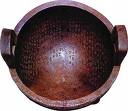
After the advent of bronze casting technology, inscriptions on bronze vessels began to appear - 金文 (jīn wén). They are usually attributed to the XIII-IV centuries. BC. Unlike 甲骨文 (jiǎgǔwén), where the characters were scratched out, the inscriptions on the bronze vessels were first stamped onto the clay mold. Another difference was their purpose. Basically, they were applied on bronze vessels for sacrifices to the ancestors, that is, they were a kind of means of communication between the living and the spirits of the ancestors.
Evolution of Chinese characters, having gone through several more stages, (until 200 BC there was a style 隶书 ( lìshū ), which was considered a style business letter), including through unification during the time of the emperor 秦始皇 (Qín ShǐHuáng), ended with the separation in the 4th century of three normative calligraphic styles: 楷书 (kǎishū), 行书 (xíngshū) and 草书 (cǎoshū).
Kaishu style楷书 (kǎishū) was a statutory letter used when writing or compiling official documents.
Xingshu Style(Italic writing 行书 - xíngshū ) allowed some abbreviations of elements in the character, and the Caoshu style (Cursive 草书 - cǎoshū ) could be used in private correspondence or actually in calligraphy.
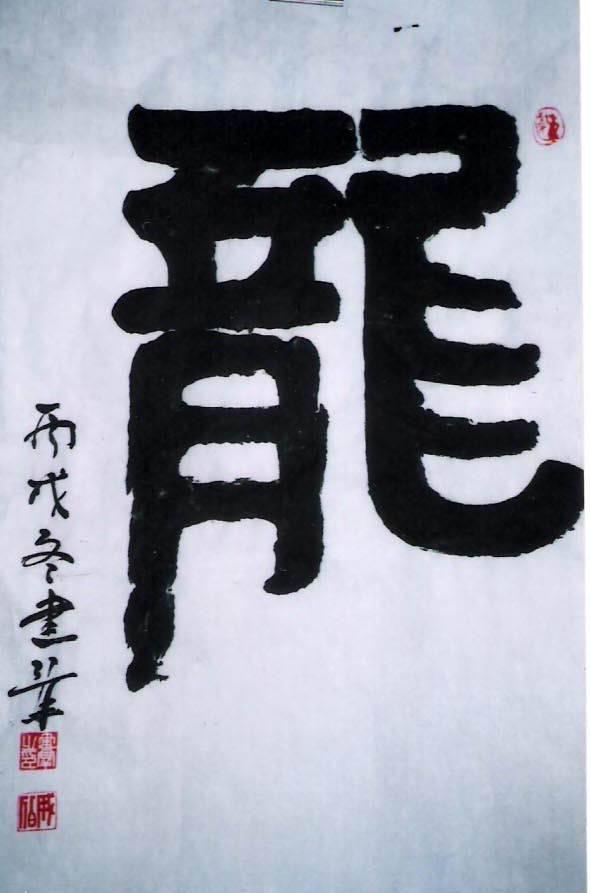
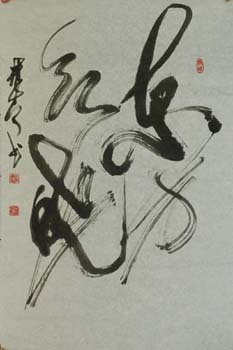 This is how the Chinese lived until the beginning of the 20th century. When did it start campaign to eradicate illiteracy among the population, the Chinese realized that existing system writing is too difficult for all segments of the population to master it. Plus, in 1905 the system of state examinations was abolished (we will definitely make an article about this).
This is how the Chinese lived until the beginning of the 20th century. When did it start campaign to eradicate illiteracy among the population, the Chinese realized that existing system writing is too difficult for all segments of the population to master it. Plus, in 1905 the system of state examinations was abolished (we will definitely make an article about this).
After the student movement on May 4, 1919, one of the demands of the participants was the abolition of 文言 (wényán - written language) and the transition to 白话 (báihuà - colloquial), wenyan was pushed out of fiction in the field of scientific texts and business correspondence. And after 1949, the PRC government stopped using Wenyan as the language of official documents. Since that time, all texts in the PRC began to be recorded in a living, colloquial language.
The last item in the change Chinese characters there was a transition to simplified characters (简体字 jiǎntǐ zì). This happened in the 60s and 70s. 20th century. Full characters are still used, for example, in Taiwan, Macau and Hong Kong (see the article "full and abbreviated characters").
Gotlib O.M. "Fundamentals of Chinese Grammar". M., 2007
Kravtsova M. "History of Chinese Culture", St. Petersburg-Moscow-Krasnodar, 2003
M.V. Sofronov. "And a valuable heritage, and a heavy burden" (article).

